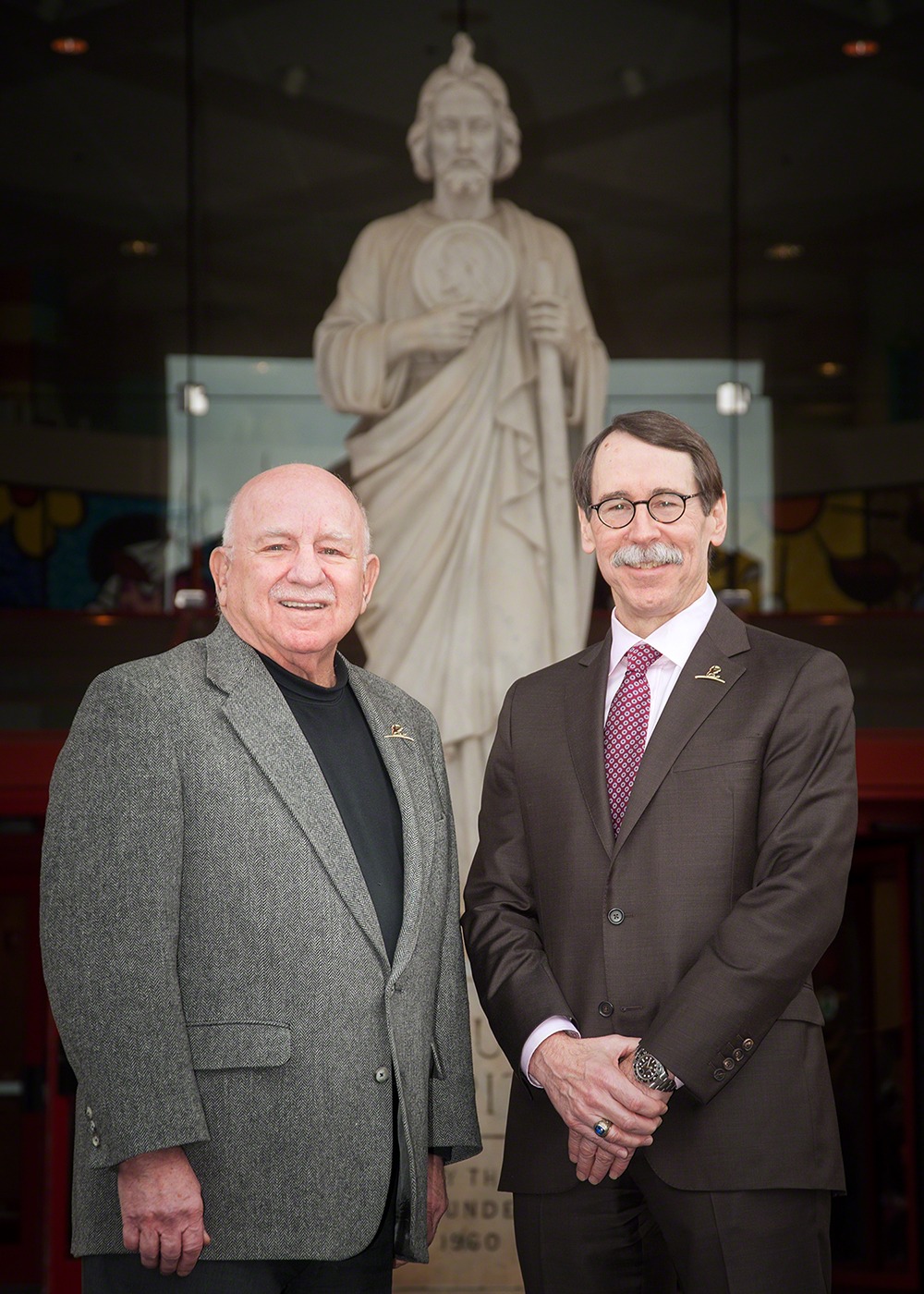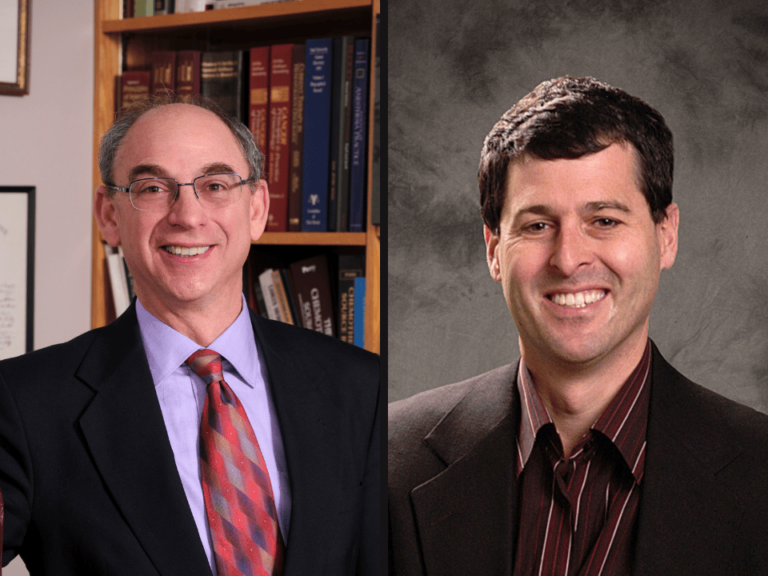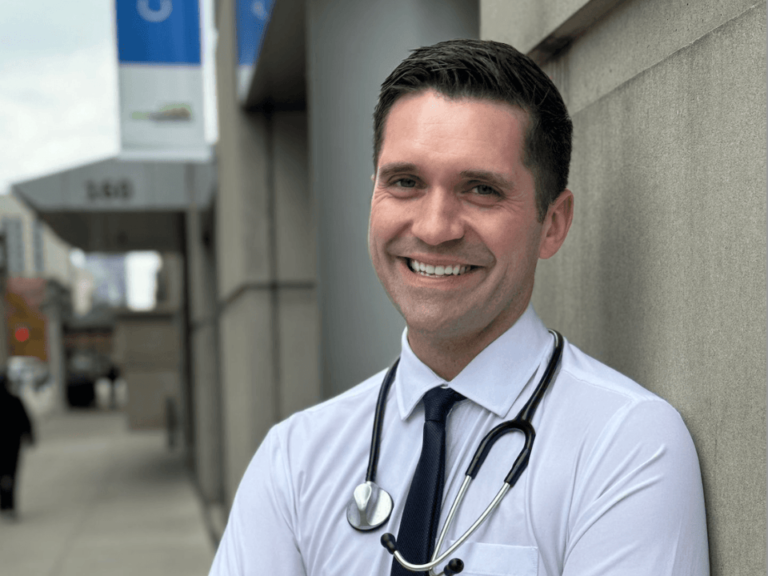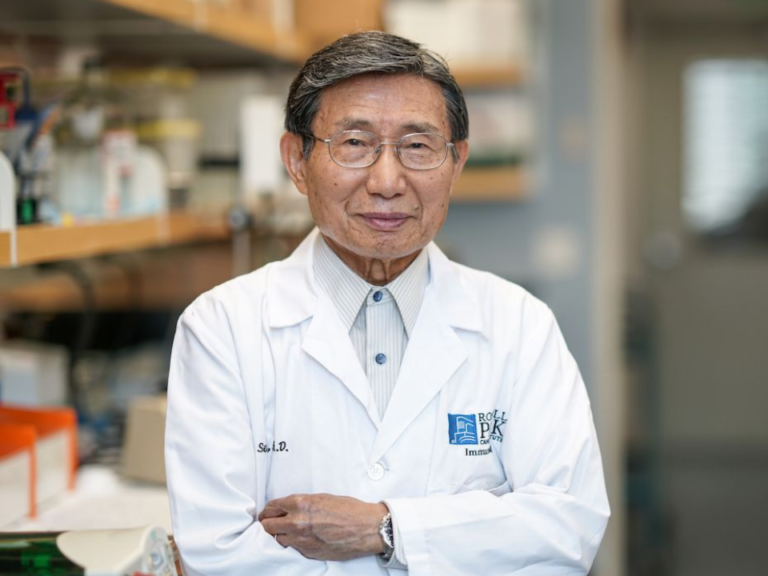On Jan. 21, when Joe Simone died at age 85, we lost a giant of oncology research, clinical translation, and policy.


Photo courtesty of St. Jude Children’s Research Hospital.
Joe is perhaps best known for his observations from a career of working in cancer centers. A few days after he died, not knowing that he was gone, I quoted him to a colleague: “Institutions don’t love you back,” and cited his article, imparting his wisdom to another generation.
I remember vividly reading “Simone’s Maxims” about working in academic oncology when it came out in 1999, which he subsequently expanded into a book. His short article became a well-worn screwdriver in the mentorship toolbox.
Joe was part of a truly remarkable achievement of 20th-century medicine, the treatment of childhood leukemia. For many of us, this story has personal resonance. Liz Low lived down the block when I was growing up, and would have later become my stepsister if she had not died of leukemia in 1964. I remember her travails vividly.
She died, because she got the disease a few years too soon, just as the remarkable, systematic clinical research was getting underway, which transformed childhood leukemia from a death sentence (~95% mortality) to an expectation of real cure (92% complete remission).
A few years later, Liz might well have been referred to St. Jude’s Hospital, where Joe was helping design pioneering trials that combined off-the-shelf drugs, careful clinical monitoring, and incremental step-by-step improvement of clinical trial protocols to capture the information about what worked and what did not. (This remarkable story is recounted in John Laszlo’s The Cure of Childhood Leukemia: Into the Age of Miracles.)
It was a result of teamwork, a large postwar cohort of pioneers in clinical research of which Joe Simone was a part of that team. He later chronicled the lessons from the leukemia research model; lessons still only partly learned. Reflecting on leukemia treatment in the 1960s, Joe observed1:
“Many hematologists in the large medical centers were violently opposed to giving chemotherapy, and a misguided protectionism of children to shield them from further suffering was the prevailing attitude.
“There was also a distrust of clinical trials and protocols, dubbed cookbook medicine by physicians, who did not want to be told how to treat their patients. Pessimism and provincialism, especially in medical schools, were also obstacles to cure.
“St. Jude Children’s Research Hospital and other institutes were looked down upon, because they were not in the academic mainstream, which in the long run turned out to be an asset rather than a liability.”
Joe Simone’s formal biography is available from the consulting firm that consumed much of his energy in his final decade. Rather than retrace his career path, since I only walked with him on part of it, I can best describe Joe by focusing on his role in a remarkable body that existed for a time, the National Cancer Policy Board, which persists in a different form through the National Cancer Policy Forum.
In 1996, NCI Director Rick Klausner and NIH Director Harold Varmus conceived of establishing an advisory committee that would reside outside NIH, serving as a source of advice independent of the research bureaucracy. Klausner worked with Bruce Alberts, president of the National Academy of Sciences, and Kenneth Shine, president of the Institute of Medicine (since 2015, the National Academy of Medicine) to establish the board, which was shared between the National Research Council (the Academies’ operational arm) and the Institute of Medicine.
The basic idea was for the federal government to give power away, for a while, to an independent group that could make recommendations back to the federal government about how to deal with cancer: both a fulcrum to leverage change in NCI, the largest and most inertial of the NIH institutes, and also a bridge to other islands in the federal cancer archipelago: the Centers for Disease Control and Prevention, FDA, Agency for Healthcare Research and Quality, Centers for Medicare and Medicaid Services, Veterans Health Administration, Military Health System, and others.
Joe Simone was appointed as the vice-chair, with Peter Howley as the chair, balancing Peter’s molecular virology with Joe’s clinical background. Joe was appointed because of his past roles at St. Jude’s and Memorial Sloan Kettering Cancer Center, but also because he was a founding chair of the National Comprehensive Cancer Network, and its flagship project of developing clinical practice guidelines for cancer care.
And because he was a really good guy. Joe and Peter were a fabulous team and wonderful to work with.
Basically, NCI funded an independent group to think through policy issues and make recommendations back to the government. I was the titular director, but the hard work came from a team of former staff of the congressional Office of Technology Assessment, which had been defunded and disbanded in the 1995 Gingrich Revolution, lobotomizing Congress by excising its esteemed staff experts in science, technology and medicine.
OTA’s loss was the board’s good fortune. OTA Health Program staff Maria Hewitt and Hellen Gelband and I were the initial staff, later joined by former OTA Director Roger Herdman, who became board director when I stepped down in 2000.
Sharyl Nass was hired from doing breast cancer research at Johns Hopkins to direct Beyond Mammography. Sharyl has now spent almost two decades at the Academies and is the senior board director for the Health and Medicine Division. It was an incredibly talented staff given full head by the NCI to do independent work. We are all part of the Simone lineage in cancer policy.
When the system is firing on all cylinders at the Academies, as was also true at OTA, the vaunted technical experts on committees drawn from the nation’s best minds work seamlessly with staff who are thoroughly familiar with methods of policy research, policy analysis, technology assessment and navigating the turbulent seas of national politics. So it was with the National Cancer Policy Board.
Peter Howley and Joe Simone were initially appointed, and then played an active role in fleshing out the rest of the board, based on their extensive networks.
Peter knew NIH and basic research; Joe knew clinical oncology, the committee included a truly remarkable constellation of cancer advocates, researchers, and clinicians; and the staff were seasoned veterans.
The board spanned expertise from academic philosophy, basic molecular biology, cancer care, epidemiology, economics, and advocacy. Frances Visco and Ellen Stovall were among the nation’s most effective patient advocates—indeed two of the most remarkable women I have ever met—who joined the board.
| Members of the National Cancer Policy Board in 1999 | |
|---|---|
| Peter Howley (Chair) | George Fabyan Professor and Chairman, Department of Pathology, Harvard Medical School, Boston, Massachusetts |
| Joseph Simone (Vice Chair) | Medical Director, Huntsman Cancer Foundation and Institute, University of Utah, Salt Lake City, Utah |
| John Bailar | Chairman, Department of Health Studies, University of Chicago, Chicago, Illinois |
| Norman Daniels | Professor of Philosophy, Tufts University |
| Joseph Davie | Vice President of Research, Biogen, Inc., Cambridge, Massachusetts |
| Robert Day | Emeritus President and Director, and Member, Division of Public Health Sciences, Fred Hutchinson Cancer Research Center, Seattle, Washington |
| Kathleen Foley | Chief, Pain Service, Department of Neurology, Memorial Sloan-Kettering Cancer Center, New York City, New York |
| Bertie Ford | Manager, Oncology Research and Registry, Grant/Riverside Hospital, Columbus, Ohio |
| Ellen Gritz | Professor and Chair, Department of Behavioral Sciences, M.D. Anderson Cancer Center, Houston, Texas |
| Elizabeth Hart | President and Chief Executive Officer, Hart International, Dallas, Texas |
| Thomas Kelly | Boury Professor and Chairman, Department of Molecular Biology and Genetics, Johns Hopkins University School of Medicine, Baltimore, Maryland |
| John Laszlo | Atlanta, Georgia |
| William Mcguire | Chief Executive Officer, United HealthCare Corporation, Minnetonka, Minnesota |
| Diana Petitti | Director, Research and Evaluation, Kaiser Permanente of Southern California, Pasadena, California |
| Amelie Ramirez | Associate Professor, Department of Medicine, Baylor College of Medicine, Houston, Texas |
| John Seffrin | Chief Executive Officer, American Cancer Society, Atlanta, Georgia |
| Jane E. Sisk | Professor, Division of Health Policy and Management, Joseph L. Mailman School of Public Health, Columbia University, New York City, New York |
| Ellen Stovall | Executive Director, National Coalition for Cancer Survivorship, Silver Spring, Maryland |
| Frances Visco | President, National Breast Cancer Coalition, Philadelphia, Pennsylvania |
| Robert Young | President, Fox Chase Cancer Center, Philadelphia, Pennsylvania |
| STAFF | |
| Maria Hewitt | Study Director |
| Hellen Gelband | Senior Program Officer |
| Robert Cook-Deegan | Director |
We staff had some of the best jobs in Washington, with a solid five-year contract ensuring independence, with free reins to set priorities to think through policies to mitigate the foremost dread disease.
Everyone cares about cancer policy; everyone is affected by it. And our job was to help fix the system. It was deeply gratifying work, and Joe Simone was a guiding light.
The first report out of the gate was not at all what NCI expected: The board concluded that the biggest hole in the national cancer system was how to apply what is known, and focused on Ensuring Quality Cancer Care.
Maria Hewit was the study director, and Joe the chair of the committee that produced the report, which then became a map for shoring up health services research and capacity for monitoring cancer care.
The board produced several short reports on tobacco control, as the Clinton Administration began to focus on policies to address the nation’s foremost preventable cause of mortality and its most deadly addiction (nicotine), and as Sen. McCain (R-AZ) was assigned responsibility to cobble together a tobacco bill—a thankless task probably assigned to him as a then relatively junior senator because he was expected to fail—that came within inches of passing monumental legislation that would have saved thousands of lives a day.


Photo courtesy of St. Jude Children’s Research Hospital.
With other units of the Academies, the board then turned to Extending Medicare Reimbursement in Clinical Trials under Hellen Gelband (Henry Aaron, chair), recommending that Medicare pay for routine care costs associated with clinical trials.
This sounds like an arcane and minor tweak, but squabbles over federal coverage of services for patients in clinical trials were a major source of delay and friction in clinical research. Within months of the report’s publication, President Clinton issued an executive order that set current policies in place, simplifying and accelerating clinical research across the board—and by the way, improving the quality and often reducing the cost to Medicare itself by producing evidence about what works and what does not.
Joe became the chair of the board when Peter Howley stepped down. The board continued to issue influential reports. All of us on staff came to love Joe. When Andrew von Eschenbach came in as NCI director, the board became a forum, which included federal officials as members, meaning that it could no longer produce reports with findings and recommendations—because that would have officials reporting to themselves—but shifted to workshops and summaries of those proceedings.
Joe worked at, and was a stalwart, a solid pillar at many remarkable institutions: St. Jude Children’s Research Hospital, Memorial-Sloan Kettering Cancer Center, Huntsman Cancer Institute, and finally University of Florida Shands Cancer Center. He infused his practical advice into those institutions, but he also had a huge influence on the nation’s program of cancer care at the policy level.
Joe’s “don’t love you back” institutional mantra was not cynical, but merely realistic, as he clarified in “Simone’s Maxims:”
One must keep in mind that institutional relationships are really with persons, who can and sometimes do love you back. My fondest memories of places I’ve been are of coworkers and patients, not “the institution.” If they moved on, my attachment moved with them. For any one of us, good coworkers and solid leaders make what we value in the institution. Recognizing them, what they do for us, and the values they represent are far more important than loyalty to an impersonal institution.
Who says stuff like that? We have lost a tremendous mentor in Joe Simone. He’s surely right about institutions, but with an ironic exception: in a way, he was an institution, and one we can forever love. And he will love us back by imparting his wisdom and unflappable midwestern pragmatism to future generations.
References:
Best Practice & Research Clinical Haematology: Vol. 19, No. 2, pp. 353–359, 2006; doi:10.1016/j.beha.2005.11.003.
The author is a professor at the School for the Future of Innovation in Society, Consortium for Science, Policy and Outcomes, Arizona State University
Joseph V. Simone’s book, “Simone’s Maxims,” is available for download through the Cancer History Project.











